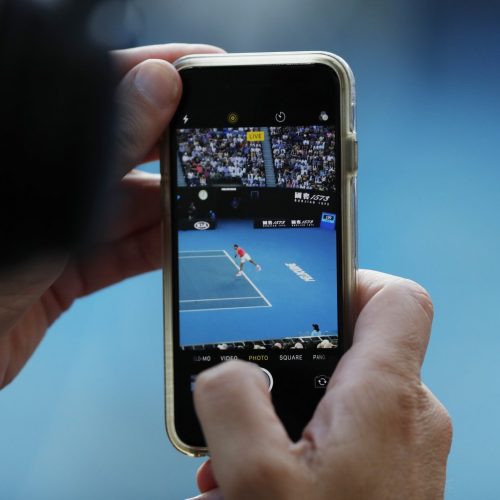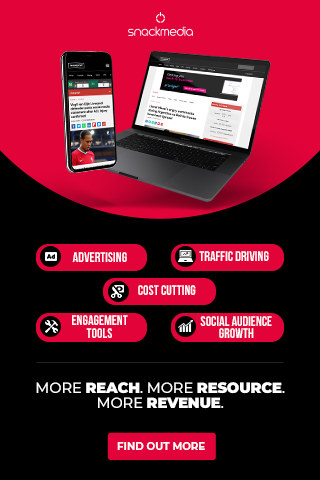Broadcasting changes promise NBA success
NBA Commissioner Adam Silver is often praised for his ability to create change and bring basketball into the modern era. With his latest proposal, Silver hopes to make basketball even more marketable.
At the recent Consumer Electronics Show in Las Vegas, Silver took part in a sports business innovation panel about the future of game format in the NBA. Specifically, Silver made two proposals. The first would be to shorten the length of games in response to the short attention span of many fans. He cited the final minutes of the game, when timeouts are used strategically to stretch two minutes into 15. By shortening the length of games, the NBA product could be more successful and marketable in the age of social media.
The second proposal had similar aims. Silver suggested that in the future, the final five minutes of games may be available for purchase through the NBA’s viewing platform, the NBA League Pass Package. Silver wants to make games more available to fans just looking to catch an exciting finish.
In the past few years, the NBA League Pass Package has evolved to fit the demands of fans. Originally, the League Pass offered one full-season price for a specific team, designed to help out-of-market fans follow their favorite team. In June 2015, the NBA announced that single games would be available for purchase, making it much easier for fans to tune into one big game.
The logic behind this new idea seems sound. In an age dominated by social media, it would allow fans that see hype on Twitter or other platforms to catch the end of an exciting game. Showing the last five minutes lets fans with busy lives and short attention spans feel a part of the game with a lower cost, more streamlined experience.
Both proposals by Silver may seem unconventional or unnecessary, but basketball has never been afraid of change. The newest of the major sports, basketball has consistently changed the format and rules of the game since it was introduced in 1946.
Basketball’s changes may be initially met with skepticism, but this is the league that transformed itself from a troubled lower-viewership league in the 70’s to a behemoth in today’s sports market. The NBA was the first league to truly embrace social media, and their player personalities and exciting stars have turned it into the most marketable sport in the United States.
NBA marketing is the envy of sports leagues across the world. They have a predisposition for success, given the small field of play, visible faces and high playing time of star players. The NBA has capitalized on this to build a strong young fan base and an even stronger future. The NBA recently signed a massive television deal that increased the league salary cap from $70 million to $92 million almost overnight.
 These proposals are just a further step towards marketing success. The NBA is always looking for ways to bring in new fans—something they have been incredibly successful with in the age of LeBron James and the Golden State Warriors.
These proposals are just a further step towards marketing success. The NBA is always looking for ways to bring in new fans—something they have been incredibly successful with in the age of LeBron James and the Golden State Warriors.
Basketball fans may protest to a fundamental change in the format of the game, but they are not the fans that matter. Hardcore NBA fans will always be there—the length of the game will not alter their devotion or viewership of their team. But by making games shorter, the NBA can bring in even more millennial fans. Creating a shorter, more streamlined game appeals to people embedded in social media—people who no longer want to dedicate almost two and a half hours to watching a sports game.
By making the last five minutes of a game available for purchase, the NBA stands to catapult itself to further broadcasting success. Most other sports require fans view the whole game to get the full story. In basketball, full games may be exciting, but it’s entirely possible to view only the last few minutes and feel satisfied. Basketball is more about the end result, not the journey there.
This new viewing option seems tailor-made for success. After all, this is already the viewing habit of many basketball fans. In Game 7 of the 2016 NBA Final, the Cleveland Cavaliers and Golden State Warriors averaged 20.2 million viewers over the course of the game. In the last three minutes of the game, viewership peaked at 44.5 million, according to ESPN.
A lower cost for the final five minutes of the game promises to draw in more viewers. Fans will no longer be deterred by the cost of viewing the full game when they only wish to see the end. And if the NBA markets this option well on social media—which they undoubtably will—the league stands to increase their profit.
It’s only too easy to imagine scrolling through Twitter, reading about Russell Westbrook’s fantastic performance, and clicking through an NBA tweet to watch the final few minutes. What’s a few dollars when Westbrook is about to overtake Larry Bird on the all-time triple doubles list?
The NBA is always looking to get ahead in an over-saturated sports market dominated by social media. These proposals seem the logical next move. NBA marketing has been outstanding in the era of social media. Altering the product to cater to these young, connected, tech-savvy fans is a step that promises to bring the NBA only profit and success.
About author
You might also like
The seven essentials for achieving successful sports branding
By Daniela McVicker When it comes to sports, great branding is a must. Your brand influences how people see your company or team. It helps you to forge connections with
Live Chat: A New Social Experience in Sports
Article written by John S. Kim, CEO and co-founder of global API company SendBird Social media rose to prominence throughout the world due to its potential for connection. Social channels provided the
Snack Media’s Football Content Campaign’s Review: February
By Mike Constanti This series, in partnership with Snack Media, will look at the best football campaigns from advertising to social media on a monthly basis, as Digital Sport evaluates how









